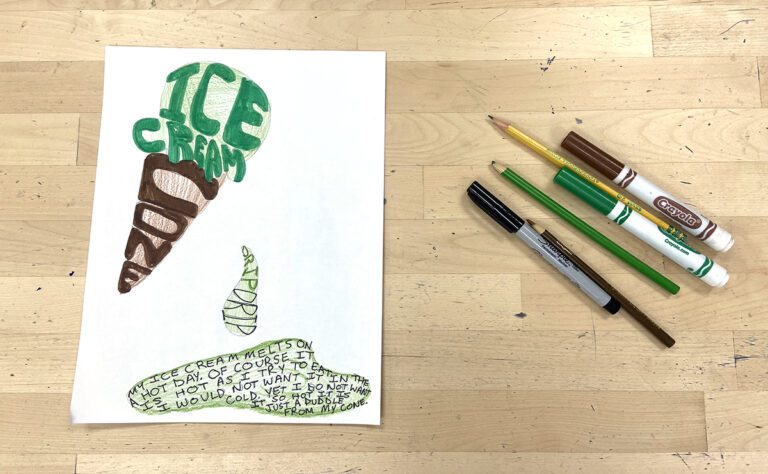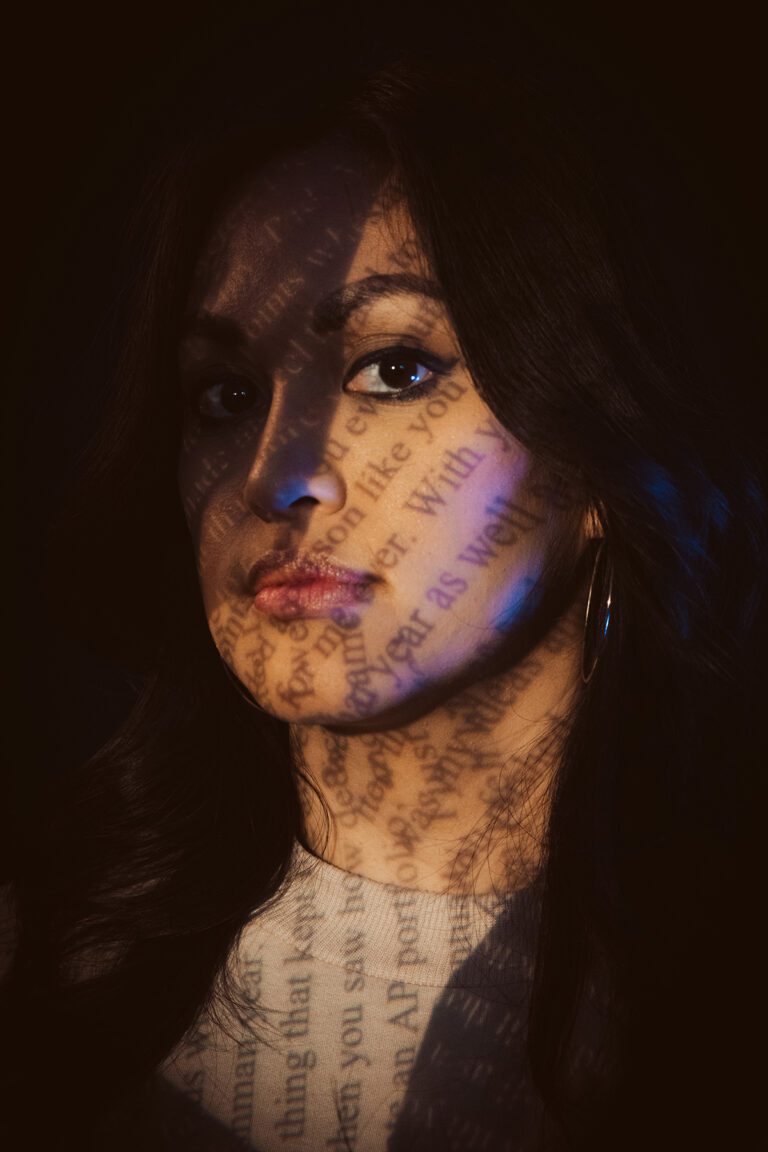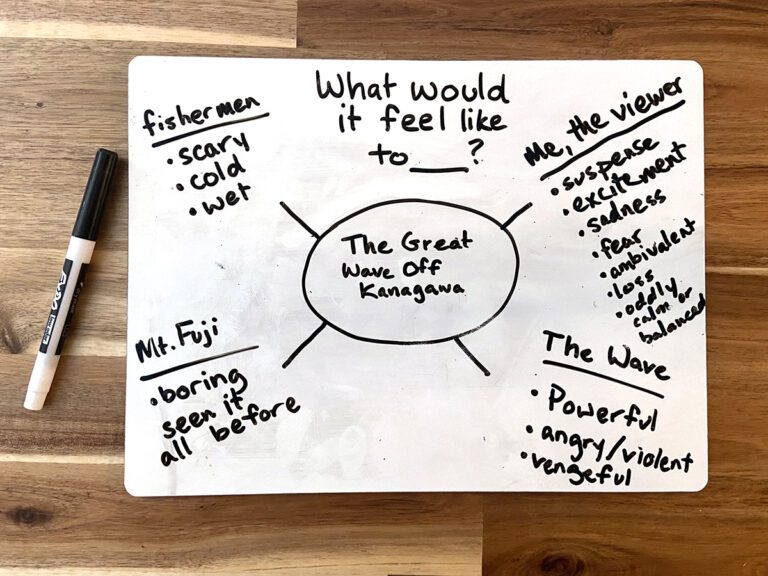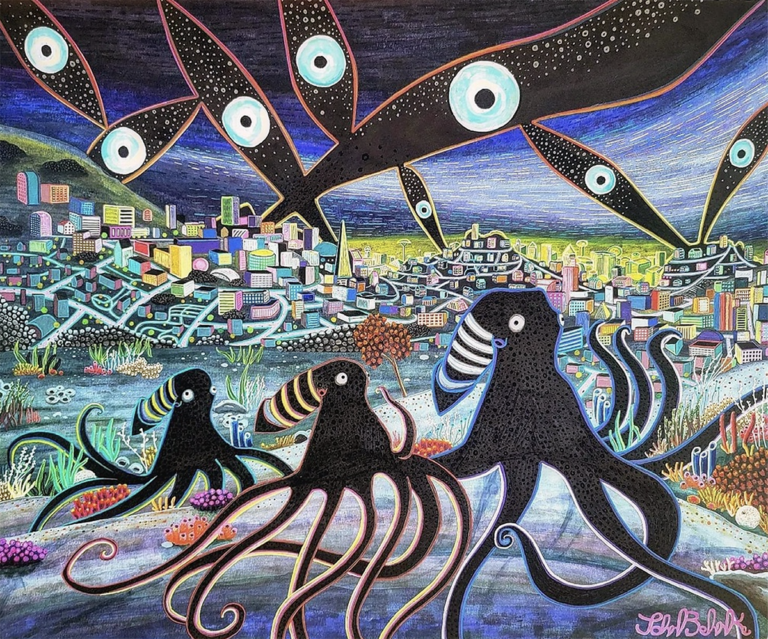As art educators, some may argue we would not have a chance at doing what we do without the likes of Rembrandt, Picasso, da Vinci, and Mattisse. These, along with a myriad of other deceased white male artists continue to inspire art teachers and their students. No one is arguing that we should eliminate these masters from the curriculum. But, there are so many other historical and contemporary artists that can show students what it means to be an artist and practice creativity.
With the help of technology, you can show your students thousands of artists from diverse backgrounds. These artists are sure to be equally inspiring and much more relatable.
Today we’ll highlight five noteworthy Black women who have changed the landscape of what it means to be an artist and live a creative life. Read on to learn more about each artist and for project ideas to inspire the work of you and your students.
1. Howardena Pindell

Pindell’s groundbreaking and multidisciplinary nearly fifty-year career weaves together paint, paper, and abstraction with the personal and political. After a life-threatening car accident left her with short-term amnesia in 1979, she focused on long processes to build up her strength of memory. Pindell has created a variety of work over the years. A mixed-media body of work focused on themes of destruction and reconstruction using strips of canvas to create elaborate wall hangings. She also is well known for work where she used a hole punch. Her website describes the work in this way saying, “She paints or draws on sheets of paper, punches out dots from the paper using a paper hole punch, drops the dots onto her canvas, and finally squeegees paint through the “stencil” left in the paper from which she had punched the dots. ” In her figurative work, Pindell addresses social issues and explores the fragility and power of what it means to be human.
Materials & Project inspiration
Working individually or in groups, have students see how many hole-punched pieces of paper they can create in a set time period. Then, have them use their hole-punched papers as stencils on various other surfaces, experimenting with different techniques. You might have a confetti-filled art room, but it will be worth it!
2. Kara Walker
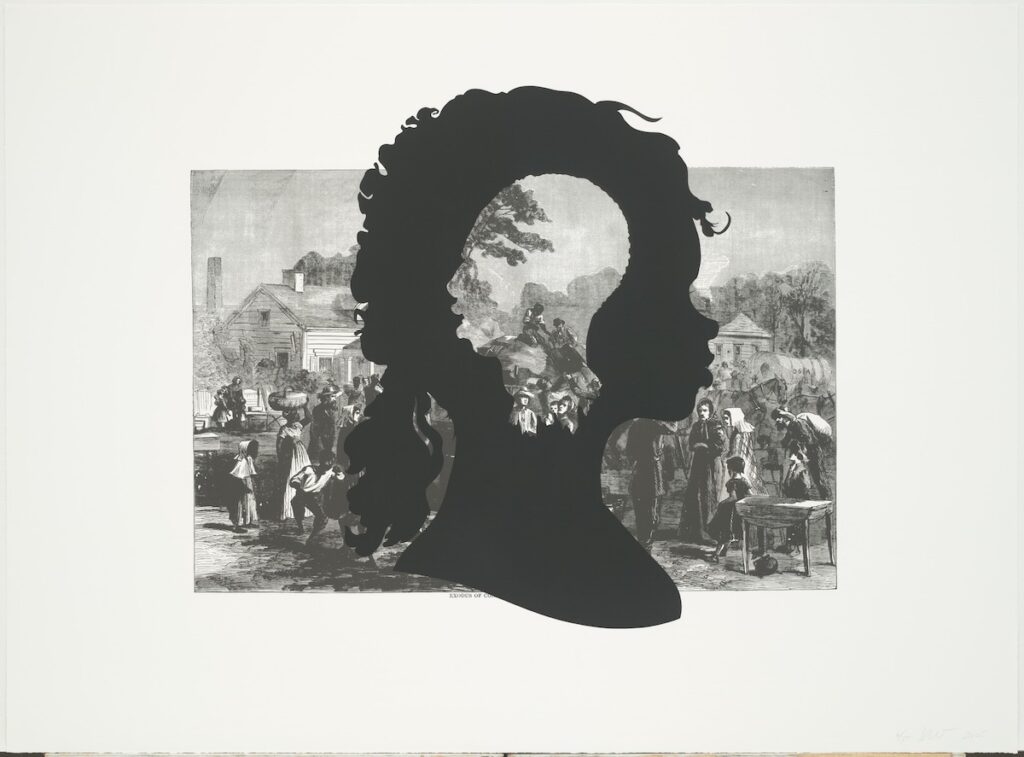
Gaining most of her national and international recognition for stark, black and white, cut-paper silhouettes, Walker is considered one the most prolific American artists living today. Focusing on complicated historical narratives regarding slavery and the ongoing traumatic psychological and physical injuries incurred by racism, her work is visually simple but horrifyingly visceral. Most of her silhouettes are life-size making them resonate all the more. The context of her work is definitely for mature students, but her material inspiration is for all.
Materials & Project inspiration
Use a projector (or the good old-fashioned sun) and draw shadows onto large butcher paper or pavement. Use a variety of materials and experiment. Have students twist their bodies or faces in interesting ways and see how many silhouettes they can draw and cut out.
3. Lillian Blades
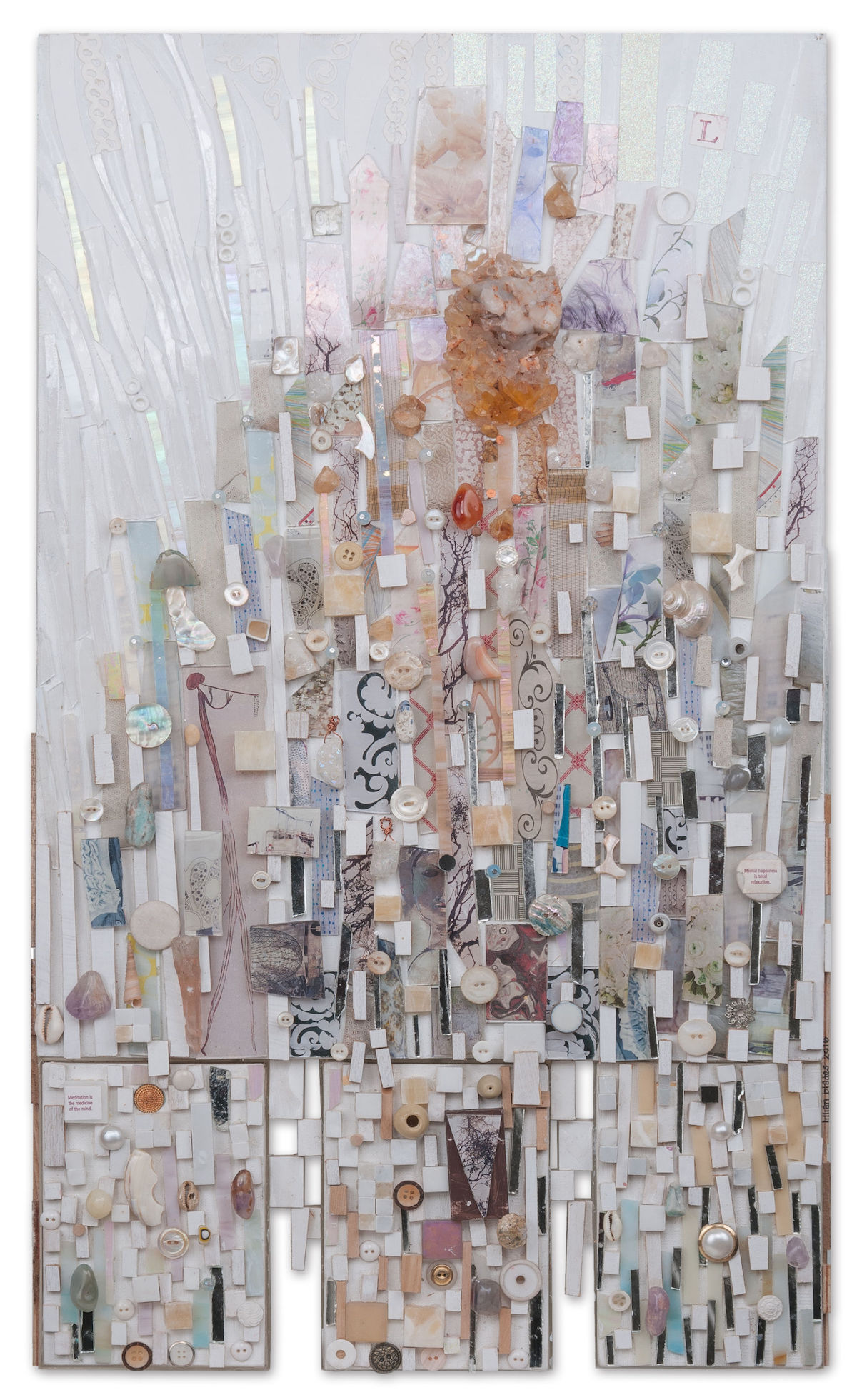
Layers upon layers of found and made objects assemble into Blades’ well-known work. Originally from the Bahamas, she is influenced by the color and vibrancy of the islands as well as her mother’s work as a seamstress. She was named the Visual Artist of the Year by the National Black Arts Festival in 2016. Her assemblages are both familiar and mesmerizing to the viewer, as they contain everyday items combined in unexpected and interesting ways.
Material & Project Inspiration
Time to lay out all the random art supplies: buttons, craft sticks, bells, beads, bits of fabric, paint swatches, marker caps, puffballs, dried beans, etc., you’ve been saving for a “rainy day.” Get a cardboard backing, add some color, and start gluing. Encourage students to make patterns they “feel” as well as see.
4. Elizabeth Catlett
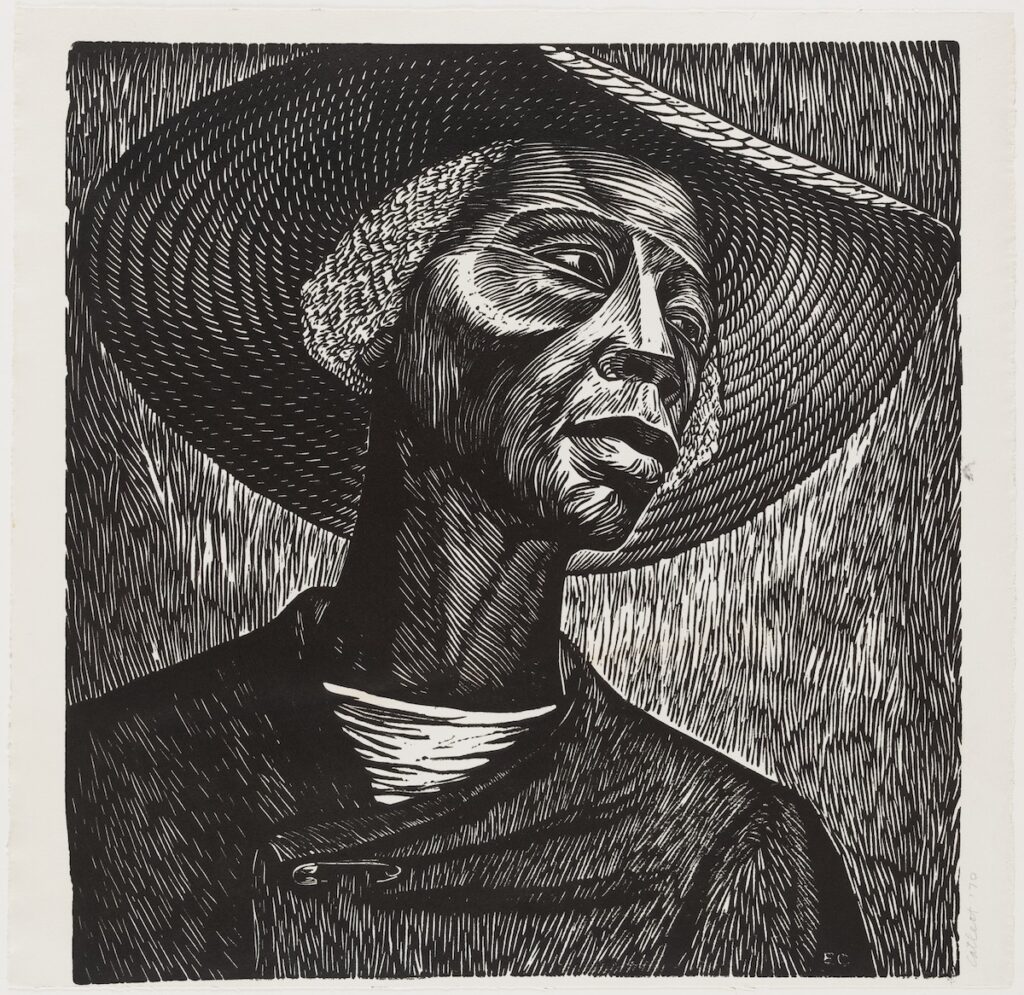
Best known for her portrayal of the Black female experience, Catlett was a trailblazer for artists to come. As the grandchild of freed slaves and the daughter of two teachers, she highlighted the struggle of Black people with her work. With obvious influences of cubism, her work seamlessly connects to the influence of the “masters” while standing strong on its own.
Materials and Project Inspiration
Make a simple monoprint self-portrait using a cotton swab and black ink or tempera paint. Collage magazines or create patterned paper to add clothing or a hat.
5. Alma Woodsey Thomas
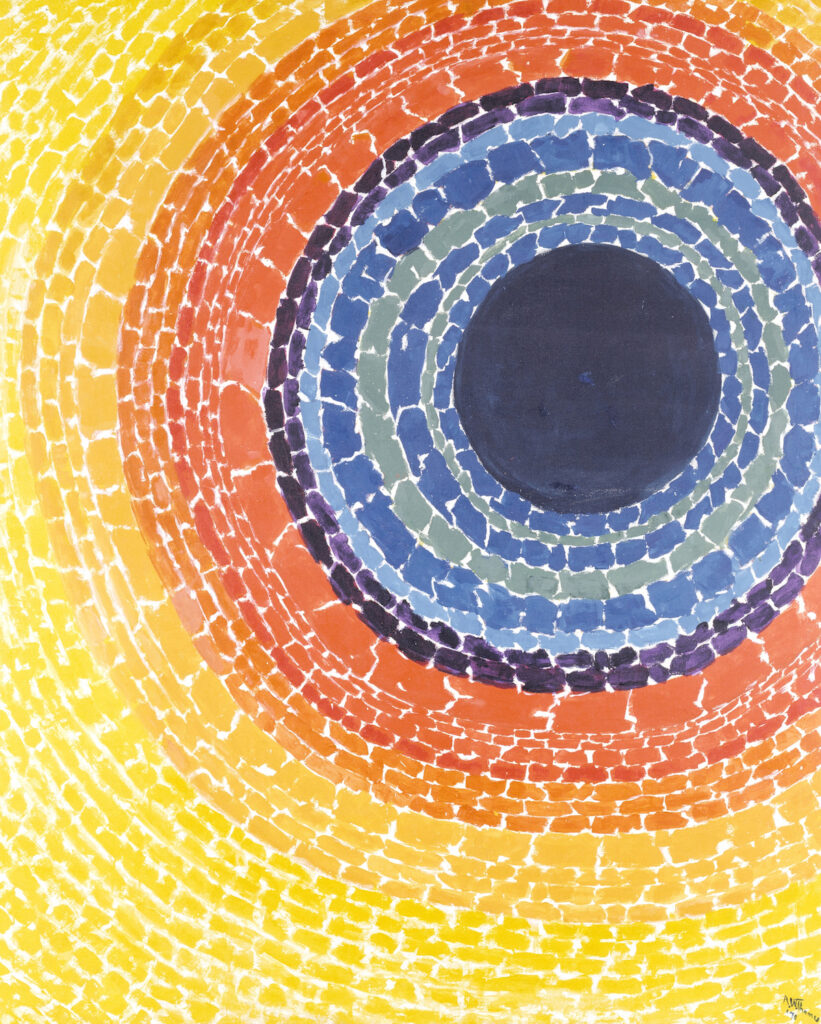
Not only an influential and groundbreaking abstract expressionist, Thomas was also an art teacher at a junior high school for thirty-five years in Washington, D.C. Her signature style incorporates order, color, and movement. At the age of eighty, she was the first African-American woman to have a solo exhibition at the Whitney Museum of American Art in 1972.
Materials and Project Inspiration
Use torn pieces of paper and glue and create a vibrant collage. Work collaboratively or individually to show how color can move and take over a surface. Perhaps choose a non-conventional surface to overtake with color like a shoe box or pizza box.
Of course, this only scratches the surface of artists to bring into your classroom. Please, take time in your classroom to share the above artists as well as others. Make your “masters” list infinitely long and diverse!
How do you make sure you incorporate a wide range of artists in your classroom?
Who is not on this list, but should be?
Magazine articles and podcasts are opinions of professional education contributors and do not necessarily represent the position of the Art of Education University (AOEU) or its academic offerings. Contributors use terms in the way they are most often talked about in the scope of their educational experiences.


